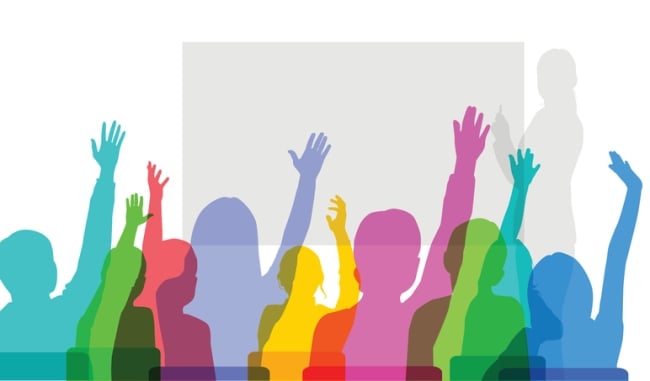You have /5 articles left.
Sign up for a free account or log in.

iStock/smartboy10
It’s a new semester, and you are gearing up for the first session of one of your courses. You have syllabus in hand, copies of course readings, information loaded into the online course management system and emails detailing student accommodation needs from the disability services office on your campus. One student has accommodations for double time on exams, one student gets a copy of class notes and one student will have a sign language interpreter. What is your responsibility with those accommodations?
Typically, faculty members aren’t asked to do much; students manage such requests. They register with the disability services office, collect paperwork documenting their individual needs and get approval, and then the DSO shares those needs with you via official correspondence. You allow for such accommodations to happen and proceed to teach the course.
Yet while such solutions are mandated by law -- the Americans With Disabilities Act and Section 504 of the Rehab Act -- they may not be enough. They generally ensure access to information. (Can students see the information? Process it?) But they don’t necessarily guarantee inclusion in the classroom learning process. (Can they interact with other students? Are some students consistently in passive roles rather than active or collaborative roles?) Only 40 percent of postsecondary students with disabilities disclose their needs to the disability services office in the first place, and thus they do not even gain access to accommodations. Moreover, those accommodations may not result in active classroom participation and collaboration.
Consider students who rely on a sign language interpreter in a class discussion when a professor is also presenting graphic information -- such as a video demonstration, graphic animation or writing out a solution on the board. They have to choose between watching the interpreter or the graphics. They have an increased cognitive load in comprehending classroom talk, as it is physically impossible to watch two places at once.
But faculty members can employ a host of relatively simple strategies to make this experience more accessible and more inclusive for students with disabilities. And it happens that such strategies often make the experience better for many enrolled students (disabled or not) -- and simultaneously make your job more effective.
So what are some examples you can use?
Pause. Literally. Often while writing on the board or displaying projected slides, faculty members narrate at the same time. But when a new slide is displayed (or when you turn toward the board to write), you should stop narrating. Give students a chance to read the information first, and then speak. You can check their eyeballs -- one cue is when students finish looking at the slides and look back in your own direction.
This allows students to get access to the information on the board separately from your verbal commentary. It reduces the cognitive load of the task at hand; it is easier to process information separately. And it probably benefits most students when learning new material, as well as students with specific disabilities, those with specific learning needs (e.g., nonnative speakers of English) and even those who are tired or hungry.
Provide whiteboards. When assigning group activities in class, provide a whiteboard to each team and give them one rule: they must use the whiteboard during group work. That requires some changes to the physical infrastructure of the classroom. Typically, in class group work, students will sit around a table together, with a worksheet and/or laptop in front of them, and talk through solving the problems while writing at the same time. That results in two challenges for students who rely on the visual channel for input. First, group members generally have their heads looking down at the table (or screen), reducing any visual cues a deaf or hard-of-hearing student might get while watching oral language production from other students. Second, it is not uncommon for students to go down an incorrect “garden path” in solving problems -- and what one person writes on their own worksheet may be quite different than what others put down.
Moving the process into a large, vertical and visual whiteboard space solves a number of those problems. It gives students in groups a level playing field for working through information visually. In addition, you can quickly glance around the room to check how far along people are in the problem-solving process. You can then intervene, provide support or offer comments or questions when and where necessary. Technological solutions such as whiteboard apps may also work here.
Consider a poster session. Many faculty members assign individual or team presentations as a culminating activity at the end of the term. The learning goals of such activities often include student synthesis of information, oral presentation and writing. But the experience of listening to student presentations can be frustrating and suboptimal for students in general as well as students who rely on language access services in particular. When nervous, many read aloud quickly (or quietly, or while mumbling), rather than pacing information well and narrating skillfully.
In contrast, the structure of poster presentations requires students to have short, clear summaries of their material ready to discuss with attendees. Students synthesize their work on the poster, prepare shorter chunks of summary information to share with multiple people and gain practice in responding to specific questions about their work
That changes the learning experience from one focused on summarizing what they have learned (and presenting it once) to a shorter summary alongside more in-depth question-and-answer periods. It allows for a better learning experience over all for many students in the course, as well as students with disabilities who have an extra load in trying to process and access information.
An unintended consequence of designing pedagogical strategies to address the challenges that students with disabilities face is that often these strategies improve the learning experience for everyone. All students probably can use a few extra seconds to process visual information before adding the layer of auditory information. Whiteboards for group work give you as a faculty member a way to quickly check all groups visually and catch groups that are heading in the wrong direction. It also allows all students to employ multiple ways of interacting with their classmates -- they can draw, write, pantomime with visual support and so on. And the repetition of telling your poster summary to attendees is perhaps a better learning experience than telling it once to your classmates.
None of these strategies are particularly difficult to implement, especially if you plan for them before your course begins. By assuming some pedagogical responsibility for the needs of students with disabilities in the course, you may improve the learning experience for all students -- as well as your own teaching experience.








